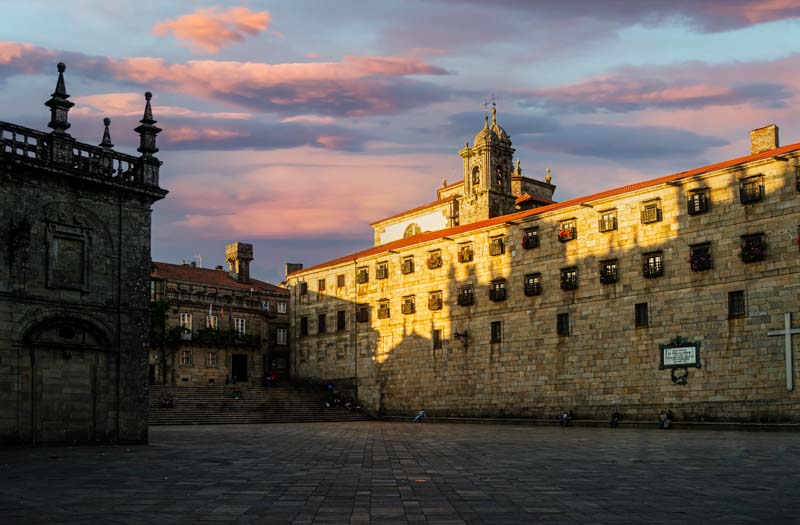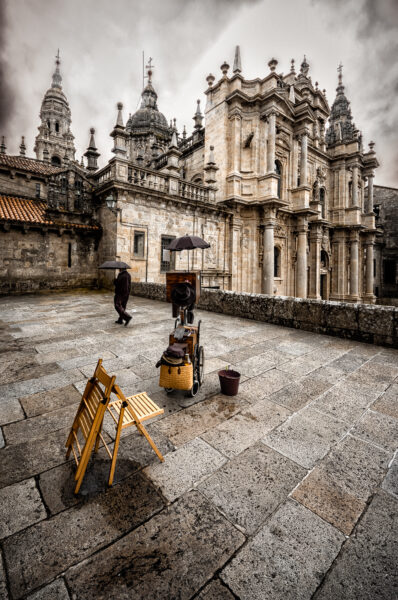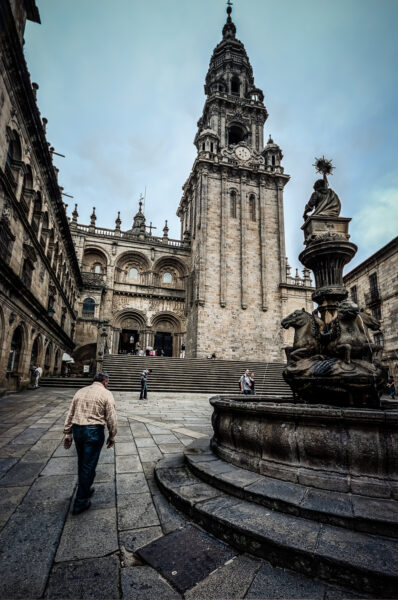Praza da Quintana, Santiago
Santiago de Compostela’s Praza da Quintana is not only a simple town square.
Located at the back of the Cathedral, it’s one of the oldest and most historical squares of Santiago.
The Quintana is physically divided into two parts by a large staircase. The upper part is called Quintana dos vivos.
If you are at the top of the stairs and look down you see what is called Quintana dos Mortos, and was once a graveyard. Go there in the middle of the night and you’ll be able to see the dead, at least that’s what the legend says! Furthermore, this place has been the setting of some weird tangles of history
Quintana dos Mortos
During the years, Quintana dos Mortos has also been a marketplace and now is a large cobbled area delimited by the walls of the eastern side of the Cathedral, with the Holy Gate and the Royal Gate and by the base of the Berenguela clocktower. On the other side, the square is closed by the massive wall of the San Paio de Antealtares monastery. Here you can see a huge marble cross, and not far from it a memorial slab with these words engraved:
A LOS HEROES DEL BATALLON LITERARIO DE 1808 LOS ESCOLARES COMPOSTELANOS DE 1896 Y LOS AYUNTAMIENTOS DE 1822 1865 1866.
This in English sounds like:
IN MEMORY OF THE HEROES OF THE LITERARY BATTALION OF 1808. POSED BY THE SCHOLARS OF COMPOSTELA IN 1896 AND BY THE CITY IN 1822 1865 1866.
A romantic story
There is a romantic story behind these words. When Spain was invaded by the armies of Napoleon in 1808, many ran under arms to fight against the invader, including students of Santiago, who formed a battalion called “literary battalion”. The young soldiers carried a scroll containing a brief poem:
“To rescue Fernando (King Fernando VII) and to put an end to Bonaparte, Minerva and Mars are united.”
The literary battalion fought in Galicia until 1810. When it was disbanded, the few survivors were all promoted to the rank of officer in the military corps.
The slab
Now, this is a romantic story of a fight for freedom. But if you look carefully, just above the slab, engraved in the stone you can read the name of José Antonio Primo de Rivera. This was the man who in 1933 founded the “Falange Española” and died during the Civil War, shot by the Republicans. He now rests alongside the late Spanish dictator Francisco Franco in the Valley of the Fallen., the memorial conceived by the same Franco to honour the deads of the Spanish Civil War. The monument was partly built by political prisoners who traded their labour for a reduction in time served.
I don’t know why the Literary Battalion slab and the name of the founder of the Falange are so close to each other, but this closeness is weird for me.
Did you like it? For more beautiful photos and travel stories, just use the menu above and browse the site.
Do you know that you can send any of my images as an e-card?
Just choose your favourite image, press the e-card- button down on the right and that’s it, the pic is ready to be sent to your loved ones! Just give it a try, it’s fun and it’s free!
Would you also like to read all my upcoming travel stories? Just click here and subscribe to my newsletter.
I will mail you only when I release a new article. Your information is 100% safe and never shared with anyone




